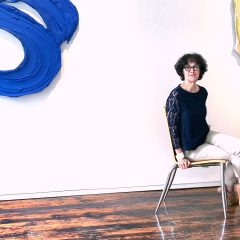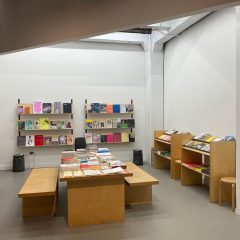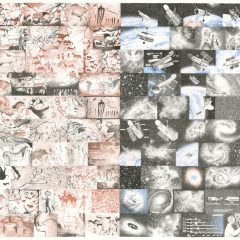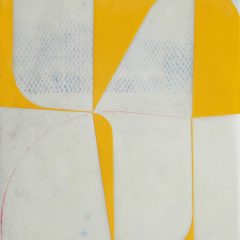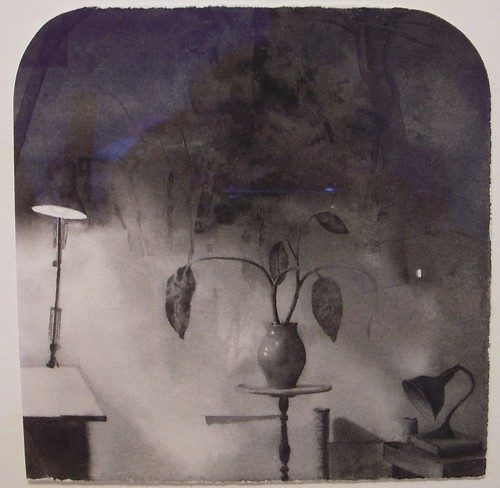
Charles Ritchie‘s second solo show at Gallery Joe is a museum-quality exhibit, a 30-year retrospective with a catalog, a glass vitrine in the vault showing the artist’s working sketchbooks and 43 works of exquisite beauty, each a washy night-time scene of the artist’s studio or his neighborhood.
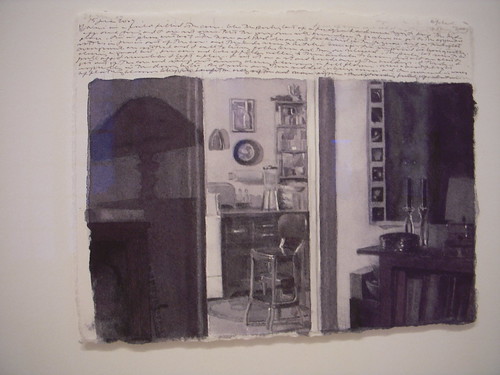
Kitchen Doorway: 14 June, 2007. watercolor, graphite and pen and ink on Fabriano paper, 5 3/4 x 7 1/4″
Where you “see” the artist is in the hand-written notes that make their way into many of the compositions (like Kitchen Doorway above). The tiny unreadable (to me) script makes the works feel like working drawings (they’re not–they’re finished). These penned words are also a mystery since who knows what they say. Is the artist waxing philosophical, jotting down anecdotes, thinking about politics or poetry…or maybe writing the day’s grocery list (JK)?
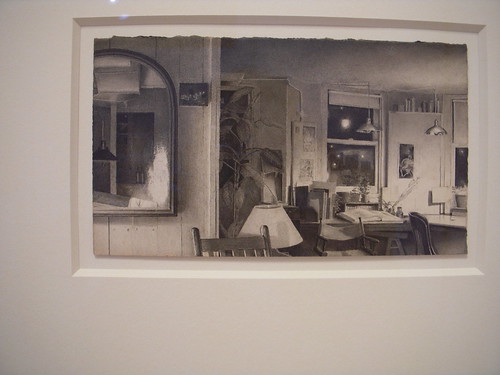
Erased Self-Portrait, 1983. watercolor, graphite, and pen and ink on Fabriano paper. 4×7″
I want to compare the overall sense of the self-contained universe — a Ritchie world in a snow globe — to Andrew Wyeth, although Wyeth is more about Americana and Ritchie is about life’s weird wonders at 4 am. Wyeth also imbues his work with a fascination with death but I see that nowhere in Ritchie. These are very life-filled works for all their dark ghostliness. Perhaps Vermeer is a better comparison. Vermeer who loved optics and the play of light and was enamored of the room, the inside space, as much as he was the people. (With the exception of Girl with a Pearl Earring, Vermeer’s people seem to me to be props or furniture as much as people).
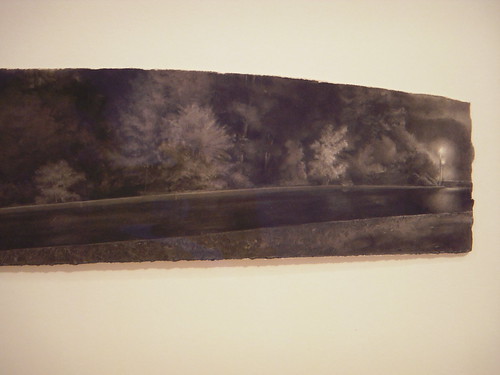
(detail) The Bend, 1984, watercolor, graphite and pen and ink on Fabriano paper. 3 5/8×14 7/8″
In his exterior scenes Ritchie focuses on the play of light on the depopulated street and the vaporous atmosphere of the early morning fog. My favorite is The Bend a sprawling, almost 15″ long scroll of fluffy trees, a sidewalk, a road and lamp posts at either end. There’s a tropical feel to the work, enhanced by the shine of the road from the early morning moisture. It’s a work that reminds me of walking in many urban parks and how wonderful the whole idea of an urban park is.
An expanded version of this show, curated by Lynn Jonas Ennis, first appeared last August at the Gregg Museum of Art and Design at North Carolina State University in Raleigh.
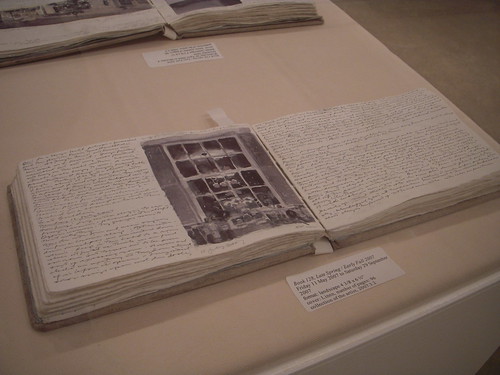
Notebooks. Ritchie has filled 131 notebooks with his drawings and words. It appears to me that he has made the books although I didn’t ask that question. They are of various sizes and seem to have idiosyncratic covers and extraordinarily sturdy paper.
The artist — who gets up at 4 am and works a couple hours before going to work — is a curator of prints and drawings at the National Gallery of Art.
Charles Ritchie
From the Inside Looking Out
Gallery Joe
Nov. 1-Dec 20.


